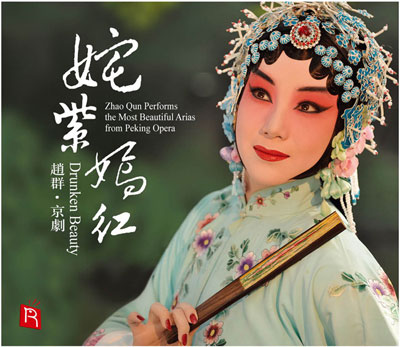Logowanie
KOLEKCJE!
BACH, CHOPIN, LISZT, MOZART, GRIEG, Dinu Lipatti, Otto Ackermann, Ernest Ansermet
The Master Pianist
PROKOFIEV, CHOPIN, TCHAIKOVSKY, SCHUMANN, BEETHOVEN, Martha Argerich, Claudio Abbado, Giuseppe Sinopoli
The Concerto Recordings
The Collection 2
Jakość LABORATORYJNA!
ORFF, Gundula Janowitz, Gerhard Stolze, Dietrich-Fischer Dieskau, Deutsche Oper Berlin, Eugen Jochum
Carmina Burana
ESOTERIC - NUMER JEDEN W ŚWIECIE AUDIOFILII I MELOMANÓW - SACD HYBR
Winylowy niezbędnik
ClearAudio
Essence MC
kumulacja zoptymalizowana: najlepsze z najważniejszych i najważniejsze z najlepszych cech przetworników Clearaudio
Direct-To-Disc
PIAZZOLLA, ChamberJam Europe
Tangos del Ángel y del Diablo
Direct-to-Disc ( D2D ) - Numbered Limited Edition
Zhao Qun
Drunken Beauty
- 1 Hong Niang, Good Tim
- 2 Female Generals of Yang Family – Exploring the Valley
- 3 Cao Cao & Yang Xiu
- 4 Silang Visits His Mother
- 5 Farewell My Concubine
- 6 Legend of White Snake, visiting lake
- 7 Lotus Lantern
- 8 The White Haired Lady
- 9 The Drunken Beauty
- 10 Qin Xianglian, Pipa Song
- 11 Selling Water, Biao Hua
- 12 The Best Schlolar’s Matchmaking
- 13 Yu Tang Chun,Story of Su San
- 14 Riverside Pavilion , An Tang
- 15 Peach Blossom Fan
- 16 Kunqu Opera, Peony Pavilion, visiting Garden
- Zhao Qun - flute
>>> Większa okładka A <<<
Peking Opera
Peking Opera or Jingju (meaning “Capitol Opera”) is one of the more than 360 kinds of Chinese opera. Peking Opera developed in the second-half of the 19th century, and rose to great popularity during the late Qing Dynasty. During its 200 year history, Peking Opera has undergone many changes, experienced many trials and was often the focus of passionate social, political and cultural debates. During the 1920s, Peking Opera emerged as one of the most exciting forms of urban popular culture in China, in every way rivaling the glamour, spectacle and scandal of America’s Hollywood – complete with its own “star system”, fan magazines and theatrical sub-culture. Following the establishment of the People’s Republic in 1949, Peking Opera was subjected once again to further modifications and modernizations and during the Cultural Revolution, Jiang Qing (Madame Mao) outlawed the entirety of traditional Chinese opera, replacing them with her “Eight Model Plays.” Following the death of Mao and the arrest of the “Gang of Four”, traditional Peking Opera returned with renewed vigor. Within a couple of years, dozens of opera troupes re-formed and traditional opera performances resumed throughout all of China. The success was short-lived, for following the opening of China under Deng Xiaoping, traditional opera gradually succumbed to the pressures of the marketplace and the sudden influx of western entertainments. As recently as ten years ago, Peking Opera was on the verge of becoming a “museum piece” performed only for tourists. Happily, a new generation of artists, such as Zhao Qun have begun exploring and embracing their cultural roots, and not only Peking Opera but even the more ancient Kunqu opera and even many other forms of regional opera are once again performed before appreciative audiences throughout China and the world. Today, “Jingju” – Peking Opera, is widely regarded as one of China’s great cultural treasures and one of the great artistic achievements of humanity.
Peking Opera – The “Total Work of Art”
Peking Opera is a purely Chinese theatrical form, originating in the year 1790 when four local opera troupes from Anhui Province (in southeast China), came to Beijing for a series of performances at the imperial court in celebration of the Qianlong Emperor’s 80th birthday. The tour was a great success and the troupes stayed on in the capitol. During their tenure, these artists came into contact with other touring groups and absorbed the tunes of the Hubei local opera and drew on the best of classical Kunqu opera, Qin Qiang (representative folk Chinese opera of the northwest Province of Shaanxi), Bang Zi (clapper opera) and other local and regional opera styles.
Classical Chinese Opera is broadly categorized into two basic types – The “Wu” or “martial” play and the “Wen” or “civilian” play; there is no clear distinction between “comedy” and “tragedy” as it exists in western theater. Additionally, whereas in Western opera, there is a rigid separation between the disciplines of singing, dancing, acrobatics and mime, in Chinese opera, each actor must posses a full range of skills upon the stage. In one scene, he may stand stationary and sing an aria with minimal gestures, and in the next, be required to engage in an elaborately choreographed dance or sword-fight.
A full discussion of the aesthetics and context of Chinese theater exceeds the limitations of this booklet, but a useful bibliography of English-language texts for further reading is provided at the end.
The Characters in Peking Opera
There are four basic “types” of characters in Chinese: the "Sheng” or male roles, the “Dan” or female roles, the “Jing” who are the painted-face characters and the “Chou” or “clown”, a role roughly similar to the fool in classical drama. These basic types are further developed into several additional categories, for instance older male actors are called “Laosheng”, younger actors, “Xiaosheng” and warriors are called Wusheng.
The “Dan” roles have the greatest number of characteristic variations. Old women were called “Laodan”, martial women are “Wudan”, young female warriors riding horses are “Daomadan”, virtuous, noblewomen are called “qingyi, and flirtatious young unmarried women are called “huadan.” One of Mei Lanfang's most important contributions to Beijing opera was in pioneering a sixth type of role, the “huashan.” This role type combines the nobility and grace of the “qingyi” with the flirtatious, extrovert characteristics of the “huadan.” For over a hundred years, all of the female characters in Peking Opera were performed by men, and each of the acting styles presented on this program were in fact, originally developed by men.

























